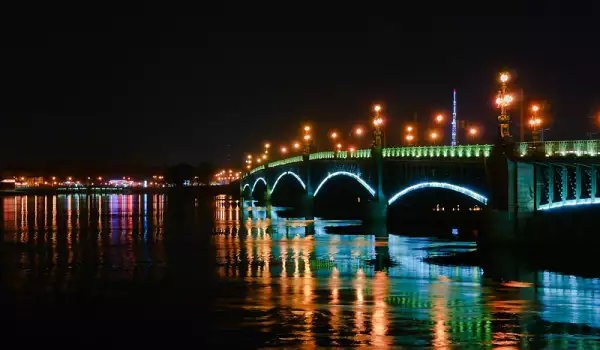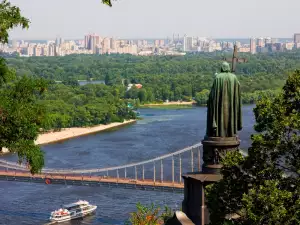Neva River

Neva River is emblematic of the Russian River lands. It flows northwest through the region of Leningrad and St. Petersburg, connecting Lake Ladoga and the Gulf in the eastern Baltic Sea, where it flows in. Neva is the third largest river in Europe in measured the annual flow, after Volga and Danube, despite its length of a mere 74 km. On its way Neva runs through 4 major cities - Saint Petersburg, Shlisselburg, Kirovsk and Otradnoye, as wells a many other small cities.
On a small island in the middle of the river Neva, near the connecting point of the river with Lake Ladoga, is the medieval fortress known as Oreshek Fortress, which together with the historical center of Shliselburg are listed as UNESCO World Cultural Heritage Sites. Along the delta of the River Neva is also found the very majestic, St. Petersburg, where the flowing river creates an especially romantic aura.
In the period between 11th of June and 2nd of July in the River Neva in St Petersburg there is the host of the beautiful natural phenomenon known as, "White Nights". During those nearly 30 days in the authorities in the city at night do not even have to run street lighting, for the day and night merge without THE sun having an opportunity, to even hide. This interesting natural phenomenon is observed due to the extremely northern latitude of St. Petersburg, where the sun can not go below the horizon to give way to the moon at night.
The White Nights of the Neva actually appear from late May to early July. They do not occur only in St. Petersburg – they can be seen in Oslo, Norway, on the southern tip of Greenland and Seward, Alaska, which are approximately the same latitude. However, only on the river Neva in St. Petersburg does the natural phenomenon have such a strong expression and beauty, and through the years has always been an inspiration for many writers, poets and artists.
At this time of year residents of this Russian city have one favorite pastime - to indulge in long evening walks along the Neva, to admire the granite embankments, bridges and exquisite passing ships.
Since the founding of St. Petersburg, the coast of the Neva is considered the "main street". through most of the 18th century, Neva had no bridges and people would move from one coast to the other trough boats. In approaching the Baltic, Neva splits into several smaller necks, to form its delta. It is a fully navigable river for sea vessels as well. The area of the basin of the Neva is about 5000 sq. km.
As for the origin of the beautiful name of the river - Neva, there are several versions of the story. According to some, it is said to be coming from the Finnish name of Lake Ladoga, Nevo (nevo - Sea). Final name Neva is set, at the end of the 18th century, until this, the channels in the delta of the river were named, with random names. About 300 years ago the coastal lands of Neva were covered by thick, green pine and spruce forests, but over time these have been almost destroyed by various factors.
Along the River Neva in St. Petersburg, visitors can see such architectural masterpieces of art, as the Winter Palace and Hermitage, the building of Admirals, the Peter and Paul Fortress. In this city along the Neva are uniquely beautiful parks named as follows: Summer Gardens, Field of Mars, Rumyantsev, Smolny, Alexander Gardens, and many others.
On the Neva are built also pretty bridges, the most famous of which is the Alexander Nevsky Bridge, built in 1965, Peter the Great Bridge from 1911, The palace bridge of 1916, this Palace bridge on the Neva links Nevsky Prospekt with Vasilievsky Island.















